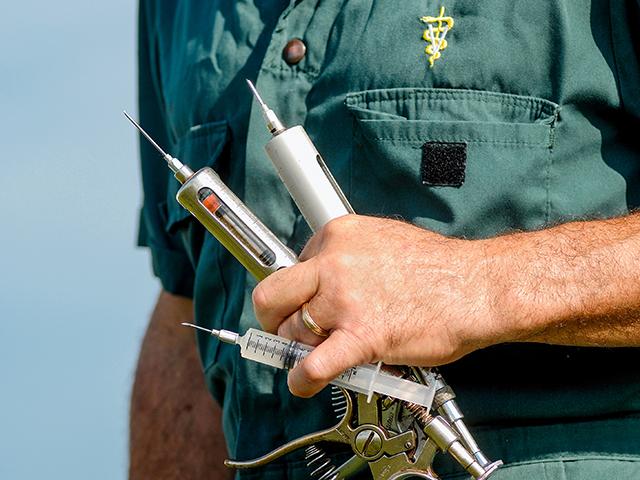Ask the Vet
Time To Make a Change
READER: Thank you for your insightful and interesting articles. I always enjoy your writing, and I fully understand the importance of having a good relationship with a local vet; but often that is not possible.
Here in northern Minnesota, much like in other areas, it's not a case of being in an underserved area when it comes to veterinarians, it's more about being in a completely unserved area. The last three vets I had out to my farm are now in a clinic treating dogs and cats. And, I can't say I blame them. I have not had a valid VCPR [Veterinary-Client-Patient Relationship] in two years.
After almost 50 years of farming, I am still learning to get along without veterinarian service in emergencies and not having access to the drugs I need to treat sick cattle. But, the thing I miss most is the ability to pick up the phone and call for advice. How do we address these issues which only seem to be getting worse?
Dr. McMillan: I hear you, and I appreciate your comments. We have a huge problem. This is not a problem of the veterinary profession alone but an industry issue.
Production agriculture is facing shortages in multiple areas. If we just look at professional support people, we are seeing shortages in a lot of areas, including accountants, bankers, attorneys and, yes, veterinarians.
These professions are not dependent on agriculture, but agriculture must have each of them to prosper. Those of us in the production agriculture industry must work with all stakeholders to come to the table and work toward a solution.
P[L1] D[0x0] M[300x250] OOP[F] ADUNIT[] T[]
Each segment has its own unique issues, and I can only speak to veterinary medicine. Veterinary medical students are increasingly more urban, and admission is increasingly based on academic records.
Unfortunately, many students from rural areas who are more likely to return to underserved or unserved areas to do large animal work are often at academic and financial disadvantages. They may have work obligations that can interfere with studies. Many may start in community colleges. When they start at a four-year university, one bad semester becomes much harder to overcome. Additionally, the cost of eight years of higher education has skyrocketed in the last 40 years.
My total tuition for my senior year of veterinary school in 1981 was $990. Now students may incur $250,000 or more in student debt. Even if they are so fortunate as to graduate debt-free, they have a substantial amount invested in their education and rightly expect a return on that investment of money and time.
Producers also face challenges. Cash-flow issues can make professional fees seem like an unbearable expense rather than a cost of doing business and an investment in the future of the operation. Many producers are part-time farmers with full-time work obligations that may conflict when problems arise or even when routine veterinary care is needed.
If we can find a way for veterinary services to become a win-win for both parties, we'd go a long way toward solving this problem.
As an example, rather than calling a veterinarian to attempt to deliver a day-old dead calf -- almost always a losing proposition for both of them -- the two should work together with other stakeholders to avoid dystocia in the first place.
At the least, let's try to get into a good position to deliver a live calf. That might be looking at bull selection, heifer development, improved handling facilities, moving to a controlled calving season and a more solid herd-health and nutrition program. This process may include Extension agents, consultants, seedstock producers, nutritionists and people from farm-supply businesses.
It's also important to find ways to maximize cash-flow for everyone. Improved marketing options, as well as utilizing ag lenders and accountants to help map out a workable financial plan, can help maximize cash-flow.
Stockyards, order buyers, stocker operators, feedlots and packers should also be looking for ways to help producers become more profitable. We are all in this together. We are not independent agents. We must be interdependent for long-term success.
I certainly do not have the answers, and this does not even scratch the surface. But, maybe your question and these thoughts can be a small catalyst to start a larger conversation on a major issue facing our industry. It's time to make a change.
**
-- Write Dr. Ken McMillan at Ask The Vet, 2204 Lakeshore Dr., Suite 415, Birmingham, AL 35209, or email vet@progressivefarmer.com
-- Please contact your veterinarian with questions pertaining to the health of your herd. Every operation is unique, and the information in this column does not pertain to all situations. This is not intended as medical advice but is purely for informational purposes.
[PF_0422]
(c) Copyright 2022 DTN, LLC. All rights reserved.



